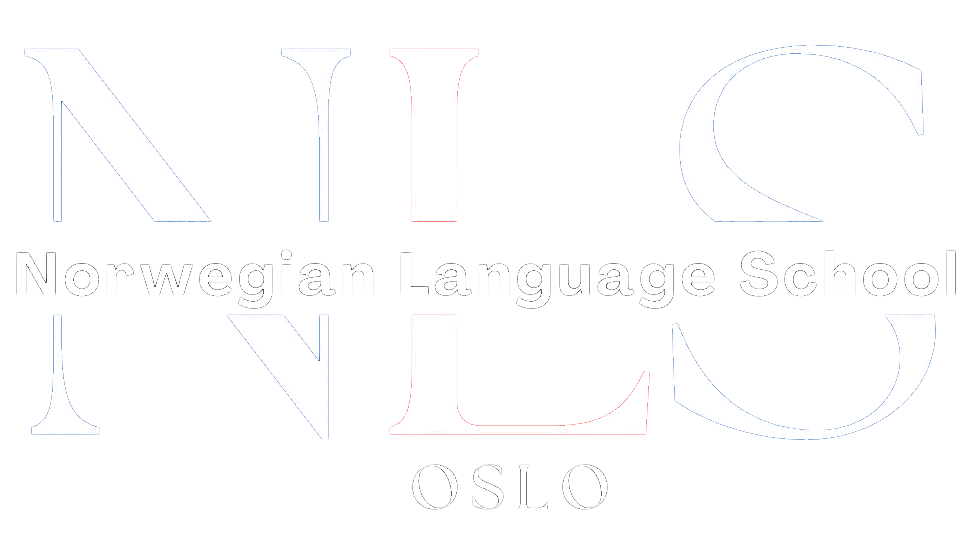

Norwegian Vocabulary A1: Essential Fundamentals
Exploring Norwegian vocabulary at the A1 level can be both exciting and challenging. While building a solid foundation in basic Norwegian words and phrases, you’ll encounter a mix of familiar terms alongside new linguistic treasures. This journey into the Norwegian language opens doors to understanding and communicating in everyday situations, from greetings to simple conversations.
Whether you’re a language enthusiast or preparing for a trip to Norway, mastering A1-level Norwegian vocabulary equips you with essential tools for navigating the language landscape with confidence. Embrace the contrast between the known and the unknown as you delve into this enriching linguistic adventure.
Table of Contents
ToggleKey Takeaways
- Start by mastering the Norwegian alphabet and numbers to build a strong foundation for learning the language.
- Begin your Norwegian language journey by familiarizing yourself with basic vocabulary and phrases to kickstart your learning process.
- Practice introducing yourself and making acquaintances in Norwegian to enhance your conversational skills.
- Learn everyday phrases for daily conversations to feel more confident and comfortable speaking Norwegian in various situations.
- Embrace friendly greetings and common expressions to connect with native speakers and immerse yourself in the Norwegian language.
- Expand your vocabulary by learning dining out and food-related terms, essential for navigating menus and ordering in restaurants.
Alphabet and Number Fundamentals
Pronunciation Practice
Data shows that practicing pronouncing Norwegian letters aloud significantly aids in language acquisition. Start by familiarizing yourself with each letter’s sound.
Writing and Recognizing Numbers
When learning Norwegian, it is crucial to practice writing and recognizing numbers. This practical skill enhances your overall language proficiency.
Understanding Ordinal Numbers
Ordinal numbers play a vital role in everyday communication. They indicate the order of items or events. Mastering them is essential for fluency.
Kickstarting with Norwegian Basics
Essential Vocabulary
Start by immersing yourself in basic Norwegian vocabulary to build a strong foundation. Learn common words like “hallo” (hello), “takk” (thank you), and “ha det” (goodbye). Practice these words daily to enhance your language skills.
Everyday Phrases
Explore simple phrases that are essential for day-to-day interactions. Master greetings such as “god morgen” (good morning) and “hvordan har du det?” (how are you?). Understanding these phrases will help you communicate effectively in various situations.
Grasping Simple Sentences
Dive into constructing basic sentences to express yourself clearly. Combine vocabulary words to form sentences like “Jeg lærer norsk” (I am learning Norwegian) and “Hvor er biblioteket?” (Where is the library?). Practice forming these sentences to improve your language proficiency.
Introduce Yourself and Make Acquaintances
Mastering Introductions
Learning Norwegian vocabulary A1 involves mastering the art of introducing yourself. Begin by grasping essential phrases like “Jeg heter” (My name is) and “Hyggelig å møte deg” (Nice to meet you). Practice these phrases to build confidence in initiating conversations.
An effective way to solidify your understanding is by creating flashcards with English on one side and Norwegian on the other. Test yourself daily to reinforce your memory and improve retention. Consider using language learning apps such as Duolingo or Babbel to practice introductions in a fun and interactive manner.
Everyday Phrases for Daily Conversations
Greetings
Exchange pleasantries with phrases like “God morgen” (Good morning) or “Hvordan går det?” (How are you?) to initiate conversations positively. Use simple words to express friendliness and create a welcoming atmosphere.
Respond to greetings by saying “Jeg har det bra, takk.” (I’m good, thank you.) or “Hyggelig å se deg” (Nice to see you), showing appreciation for the interaction. These basic phrases are essential for starting conversations smoothly.
Asking for Help
When in need, polite requests such as “Kan du hjelpe meg, vær så snill?” (Can you help me, please?) or “Kan du gi meg en hånd?” ( Could you assist me?) are valuable. Express your needs clearly, using polite language to ensure effective communication.
In situations requiring immediate assistance, phrases like “Skynd deg” (Please hurry) or “Jeg trenger hjelp nå” (I need help now) convey urgency. Being direct and clear in your requests can lead to quicker solutions.
Expressing Gratitude
Show appreciation by saying “Takk så mye” (Thank you so much) or “Jeg setter virkelig pris på det” (I really appreciate it). Acknowledging kindness with these phrases fosters positive interactions and strengthens relationships.
After receiving help, express gratitude by adding specific details like “Hjelpen din var viktig” (Your assistance was important) or “(Jeg setter pris på støtten” (I’m grateful for your support). Personalize your thanks to make the gesture more meaningful.
Making Apologies
When mistakes happen, apologize sincerely with phrases such as “Jeg beklager” (I’m sorry) or “Beklager“ (My apologies.) Taking responsibility for errors shows maturity and respect towards others.
If a situation requires a formal apology, use phrases like “I deeply regret my actions” or “Please accept my sincere apologies.” Conveying remorse effectively resolves misunderstandings.
Friendly Greetings and Common Expressions
Basic Greetings
Start conversations with simple greetings like “Hei” (hello) or “God morgen” (good morning). These phrases are essential in everyday interactions.
Polite Phrases
Show respect by using polite expressions such as “Takk” (thank you) and “Vær så snill” (please). These phrases reflect cultural courtesy.
Asking How Someone Is
Engage in conversations by asking “Hvordan har du det?” (How are you?). This shows genuine interest in the other person’s well-being.
Expressing Gratitude
Express gratitude with phrases like “Jeg er takknemlig” (I am grateful) or simply “Takk skal du ha” (Thank you). It’s important to acknowledge kindness.
Apologizing Sincerely
Learn to apologize sincerely with phrases like “Unnskyld” (sorry) or “Beklager” (apologies). Showing remorse is key in social interactions.
Common Social Phrases
Master common social phrases like “Ha en fin dag” (have a nice day) or “Lykke til!” (good luck!). These expressions add warmth to your conversations.
Dining Out and Food Vocabulary
Essential Phrases
When dining out in Norway, it’s crucial to learn some essential phrases to navigate menus and communicate with servers effectively. For instance, “Kan jeg få menyen?” means “Can I have the menu?” while “Jeg vil gjerne bestille” translates to “I would like to order.” These simple phrases can enhance your dining experience.
Culinary Terms
Exploring Norwegian culinary terms can also enrich your understanding of local cuisine. For example, “Laks” means salmon, a popular fish in Norwegian dishes. “Kjøttboller” refers to meatballs, a traditional dish often served with lingonberry sauce.
Local Specialties
Norway boasts a variety of unique dishes that you should try when dining out. Some popular options include “Fårikål,” a flavorful lamb and cabbage stew enjoyed during the autumn months. Another must-try is “Rakfisk,” a type of fermented fish that showcases Norway’s culinary diversity.
Ordering Desserts
Don’t forget to save room for dessert! When ordering sweets in Norway, you might encounter terms like “Bløtkake” (sponge cake) or “Skillingsbolle” (cinnamon bun). These delectable treats are perfect for satisfying your sweet tooth after a delicious meal.
Navigating Cities and Directions
Asking Directions
When navigating through Norwegian cities, it’s essential to master asking for directions effectively. Start by politely approaching a local or passerby and asking, “Unnskyld, hvor er togstasjonen?” (Excuse me, where is the train station?). This simple phrase can help you track your way around unfamiliar places.
Remember to use key phrases like “Gå rett fram” (Go straight ahead) or “Ta til venstre/høyre” (Take a left/right) to understand and follow directions accurately. By developing these basic communication skills, you can confidently explore new cities and public areas in Norway.
Public Transportation
Norwegian cities offer efficient public transportation systems that make getting around convenient. Familiarize yourself with common terms like “buss” (bus), “tog” (train), or “trikk” (tram) to easily navigate the city’s transport network. Understanding these terms will help you plan your journeys and move around with ease.
- Pros:
- Efficient public transportation options.
- Clear signage in English for tourists.
- Cons:
- Limited late-night transport services.
- Some rural areas may have less frequent transport connections.
Locating Landmarks
To find your way around, learn to identify prominent landmarks such as “kirke” (church), “museum,” or “bibliotek” (library). These landmarks serve as useful reference points when asking for directions or following maps. Pay attention to street signs and building names to progress smoothly through urban areas.
Essential Tips for Norwegian Language Beginners
Vocabulary Expansion
To enhance your Norwegian vocabulary a1, consider using flashcards and language learning apps. These tools can help you memorize new words effectively.
Engage in daily vocabulary practice by setting aside dedicated time to learn and review new words. Consistent exposure is key to retaining information.
Pronunciation Practice
Improve your Norwegian pronunciation by listening to native speakers and mimicking their intonation. Pay attention to the sounds of vowels and consonants.
Practice speaking aloud to yourself or find a language partner to converse with regularly. Feedback from others can help you refine your pronunciation skills.
Grammar Mastery
Mastering basic Norwegian grammar rules is essential for constructing sentences correctly. Focus on understanding word order, verb conjugation, and noun gender.
Create simple sentences using the vocabulary you’ve learned to reinforce your understanding of grammar concepts. Practice writing short paragraphs to apply these rules in context.
Cultural Immersion
Immerse yourself in the Norwegian culture by watching Norwegian movies, listening to music, and reading books in Norwegian. This exposure can deepen your understanding of the language.
Join online communities or local language exchange groups to interact with native speakers and immerse yourself in everyday conversations. Practical application enhances language retention.
Final Remarks
You’ve covered a wide array of essential Norwegian vocabulary and phrases, setting a solid foundation for your language learning journey. By mastering these basics, you’re well-equipped to engage in everyday conversations, navigate various scenarios, and expand your vocabulary further. Remember to practice consistently and immerse yourself in the language to enhance your skills.
Continue exploring new resources, practicing regularly, and challenging yourself with more complex vocabulary and grammar structures. Embrace mistakes as part of the learning process and celebrate your progress along the way. With dedication and perseverance, you’ll soon find yourself speaking Norwegian with confidence and fluency. Keep up the great work!
Frequently Asked Questions
How can I improve my Norwegian vocabulary at level A1?
To enhance your A1 Norwegian vocabulary, focus on mastering basic phrases for daily interactions. Practice using everyday words, greetings, and numbers regularly. Utilize online resources and flashcards to reinforce learning efficiently.
How can I effectively navigate cities and directions in Norway using Norwegian?
Mastering city navigation requires learning common directional phrases in Norwegian. Practice asking for and understanding directions to key locations such as restaurants or landmarks. Utilize maps in both English and Norwegian to enhance comprehension while exploring new places.
What are some friendly greetings and common expressions I should know when learning Norwegian at level A1?
Incorporate friendly greetings like “Hei” (Hello) and “Ha det bra” (Goodbye) into your daily conversations. Learn common expressions such as “Takk” (Thank you) and “Unnskyld” (Excuse me) for polite interactions. Embrace these phrases to build confidence in communicating effectively at an A1 level.

Norwegian A1-A2
Course Overview The Norwegian A1-A2 course is an online program focused on teaching essential Norwegian grammar and vocabulary. It includes a variety of materials and topics, with opportunities to interact with a Norwegian teacher entirely online. Curriculum Highlights The course covers key areas such as grammar and vocabulary and topics such as family, daily life, education, work, traditions, and leisure activities. Who Should Enroll? This course is perfect for beginners or those at the A1 or A2 levels who want to improve their Norwegian skills. What You Get Access to the full Norwegian A1-A2 course. A monthly 1-hour online conversation with a teacher. Many written and oral assignments. Comprehensive information on Norwegian grammar, Norwegian vocabulary and how to use them, important sentence structures, etc. Tips on additional resources to further enhance your Norwegian learning.
0 students enrolled
Last updated Dec 10th, 2024
If you want to learn Norwegian, you can register for classes here. We look forward to hearing from you and helping you become fluent in Norwegian.





